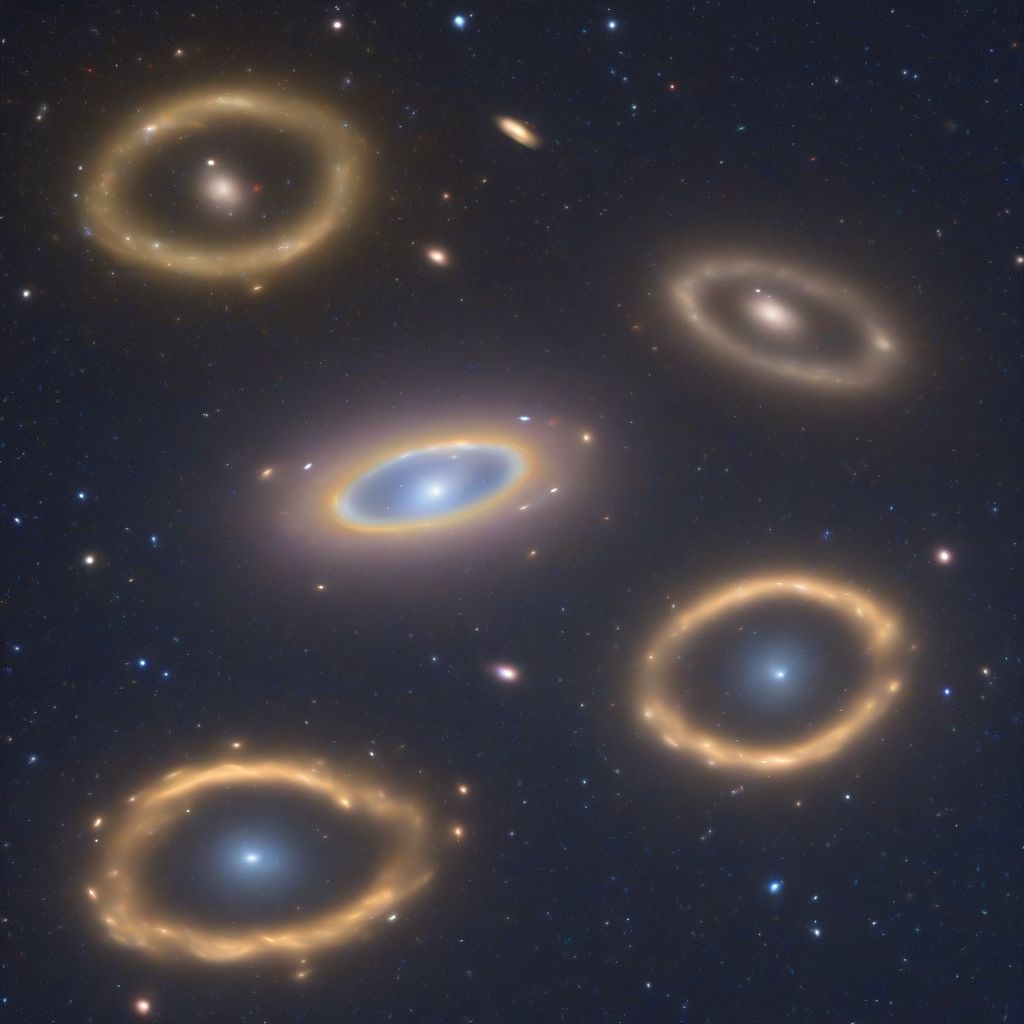Imagine a cosmic dance where we only see a few dancers, yet we know the ballroom is crowded. That’s the mystery of dark matter and dark energy – unseen forces comprising the vast majority of our universe. But how are we exploring these elusive entities? Let’s delve into the fascinating world of cosmological detective work.
Unveiling the Invisible: Exploring Dark Matter
Dark matter, unlike the matter we know, doesn’t interact with light. We can’t see it, but we know it’s there due to its gravitational effects on visible matter, radiation, and the large-scale structure of the universe. Scientists are using several ingenious methods to track down this mysterious substance:
1. Gravitational Lensing: Bending Light to Reveal the Unseen
Massive objects, including dark matter, warp the fabric of spacetime, bending the path of light traveling from distant galaxies. By studying these distorted images, astronomers can map the distribution of dark matter in galaxy clusters. This “gravitational lensing” acts like a cosmic magnifying glass, revealing the presence of the invisible.
2. Galaxy Rotation Curves: A Cosmic Speed Mystery
Stars within galaxies orbit the galactic center. The speed of these stars should decrease as their distance from the center increases, like planets in our solar system. However, observations show that stars at the outer edges of galaxies rotate much faster than expected. This discrepancy suggests the presence of a “halo” of dark matter surrounding each galaxy, providing extra gravitational pull.
3. Particle Detectors: Searching for WIMPs
The leading theoretical candidate for dark matter is the Weakly Interacting Massive Particle (WIMP). Scientists are using highly sensitive detectors, located deep underground to shield from cosmic rays, to search for these elusive particles. These experiments aim to capture the faint recoil of an atomic nucleus when a WIMP collides with it, like a cosmic game of billiards.
 Dark Matter Gravitational Lensing
Dark Matter Gravitational Lensing
Unraveling the Accelerating Expansion: Exploring Dark Energy
Dark energy is an even more perplexing enigma. It’s believed to be the force responsible for the accelerating expansion of the universe, acting like anti-gravity. Scientists are employing various strategies to understand this mysterious force:
1. Supernovae Observations: Measuring Cosmic Distances
Type Ia supernovae, exploding stars with consistent brightness, are used as “standard candles” to measure cosmic distances. By observing these supernovae at different distances, scientists have discovered that the expansion of the universe is accelerating. This unexpected finding provided the first strong evidence for dark energy.
2. Baryon Acoustic Oscillations: Sound Waves from the Early Universe
Baryon Acoustic Oscillations (BAO) are subtle ripples in the distribution of matter that originated in the early universe. These ripples act as a “standard ruler,” allowing scientists to measure the expansion rate of the universe at different epochs. BAO measurements support the existence of dark energy and provide crucial information about its properties.
3. Large-Scale Structure Surveys: Mapping the Cosmic Web
Scientists are mapping the large-scale structure of the universe, the cosmic web of galaxies and galaxy clusters, to study the influence of dark energy on its evolution. These surveys provide a 3D view of the universe, allowing researchers to track the expansion history and the role of dark energy in shaping the cosmos.
 Dark Energy Cosmic Expansion
Dark Energy Cosmic Expansion
The Future of Dark Matter and Dark Energy Research
The quest to understand dark matter and dark energy is a frontier of scientific exploration. New telescopes, like the James Webb Space Telescope and the Euclid mission, are poised to provide unprecedented data on these mysterious entities. Sophisticated computer simulations are also helping researchers model the evolution of the universe and test different theories about the nature of dark matter and dark energy. As Professor Sarah Bridle, a leading cosmologist, once remarked, “We are just beginning to scratch the surface of understanding the dark universe. The next decade promises to be a golden age of discovery.”
Conclusion
The exploration of dark matter and dark energy is a cosmic detective story on a grand scale. From gravitational lensing to supernovae observations, scientists are employing ingenious techniques to uncover the secrets of these elusive entities. While much remains unknown, the ongoing research is pushing the boundaries of our understanding of the universe. The invisible universe, once shrouded in mystery, is gradually yielding its secrets, promising exciting discoveries in the years to come. What are your thoughts on the mysteries of dark matter and dark energy? Share your comments below and let’s explore the universe together!



